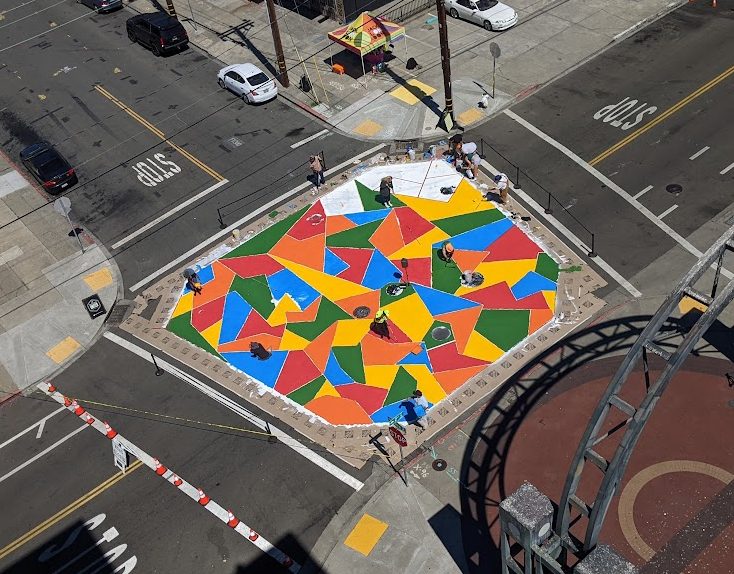We talk a lot on this blog about the way that government policy can
help to create livable streets. But we don't often discuss the role
that individual property owners can play when they're inspired to
create a more pedestrian-friendly space.
 The owner of this property in Miami has decided to convert a parking lot to a terrace.
The owner of this property in Miami has decided to convert a parking lot to a terrace.Today's post, from Streetsblog Network member Urban City Architecture,
gives an example of how -- by converting a small parking lot to a
terrace -- one business owner in Miami's Brickell neighborhood is
contributing to an increasingly vital streetscape:
It seems that recent development and newemphasis on the pedestrian landscape has encouraged a property owner inBrickell to replace a small surface (parking) lot in front of abuilding with more pedestrian-oriented and occupiable urban spacefronting the sidewalk instead. Over the last couple of months, workershave been busy transforming the old parking spaces into an elevatedoutdoor seating space for what I presume will be a restaurant (orexpansion of the existing restaurant next door).
Inessence, the integration of the building within the urban fabric hasbeen reconfigured to make it more responsive to pedestrians and morefitting with its surroundings. Prior to these changes, the building’sparking layout served as a physical and visual barrier between thepedestrian and the building. Much in the same way that buildings aresetback behind inhospitable and unwalkable parking in the suburbs --pedestrians walking the streets were not greeted by a building facadeor window but rather by a long row of car exhausts and vehicle bumpersthat contribute nothing to the urban atmosphere.
Luckily,the transformation of the space will change this unfavorable dynamicand create a more lively and active environment on the streets.
It's
part of a process that the post's author, Adam Mizrahi, likes to call
"automobile attrition." And it's an intriguing example of how, when a
neighborhood achieves some livable streets momentum, the dead space
created by cars and parking becomes more apparent.
More from around the network: Newton Streets and Sidewalks talks about how more roads don't ease congestion; Urban Milwaukee has a personal story about how senior citizens can get shut out of walkable neighborhoods; and The Infrastructurist looks at why Hawaii got complete streets legislation and Missouri didn't.





